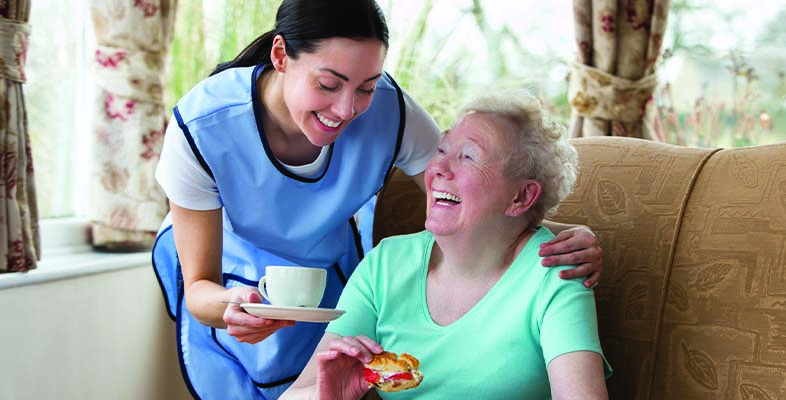1.1 Barriers to communication
Good communication is vital in social care. It enables us to build relationships with the people we care for and their families, develop relationships with people we work with and other professionals, provide clear information and carry out appropriate reporting and recording.
From the time we get up to the time we go to sleep, we are communicating. We can have hundreds of moments in a day when we are communicating in many different ways, and with many people. But not everyone is that fortunate.
Some people have real difficulties with communicating what they want from us, and this can sometimes lead to behaviour that we find hard to deal with due to their frustration at not being able to make themselves understood and get their needs met.
When we communicate, it’s not just about the actual words we use (verbal communication). We also need to think about the way we say those words – our tone of voice, the speed of our words, how loudly or softly we are speaking (vocal communication) and what our bodies – especially our faces and hands – are saying. This body language is called visual communication and it includes the way we stand or move our bodies, the way we use our hands, the expression on our faces and the eye contact we make.
Activity 3
Watch this video:
Transcript: If waiters were honest
If waiters were honest
If you didn’t understand the words these people were saying, what impression would you get of the service you were receiving?
Think about what the people in the video were telling you:
- the words they use
- the way they say the words
- their body language.
Which of these did you notice most? Write your thoughts in the box below.
Comment
It is easy to see from the video that the words we use are only a part of the message we are communicating when we speak. The speech of the people in this video says something entirely different from what they are saying with their tone of voice and body language. Think about this when you are with the people you care for, and consider what message you are giving to them, especially if they can’t understand what you are saying.
Visual, verbal and vocal communication
You are now going to think about visual, verbal and vocal communication, and which of these types of communication we use most often.
Activity 4
a.
(a) Visual 43% Vocal 21% Verbal 36%
b.
(b) Visual 71% Vocal 2% Verbal 27%
c.
(c) Visual 55% Vocal 38% Verbal 7%
The correct answer is c.
Comment
(c) Visual 55% Vocal 38% Verbal 7%
